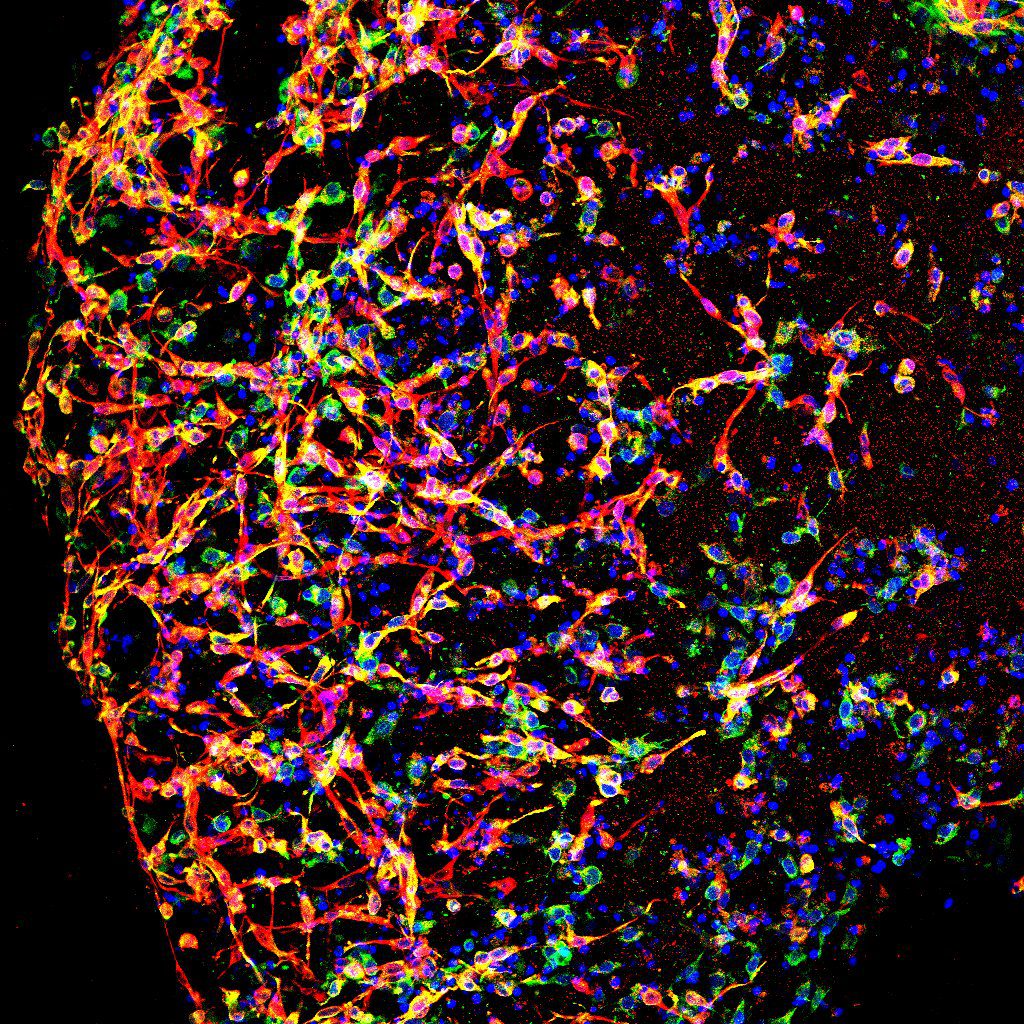24 April, 2023
ASCTN-INT collaboration paper IBEC-Creatio (Basic Research)

AN OPTIMIZED HYALURONIC ACID- BASED BIOINK COMPATIBLE WITH NEURAL NETWORK FORMATION IS DEVELOPED BY ASCTN-ITN PROJECT
The collaborative work between the researchers from the Marie-Curie ASCTN-ITN has achieved a bioink with improved differentiation and network formation to be used in the development of 3D printing neural tissue
As part of Marie-Curie ASCTN-ITN project, the research performed at IBEC in collaboration with University of Barcelona and Creatio resulted in a paper describing a new biomaterial compatible with neural network formation published at Frontiers in Bioengineering and Biotechnology. The paper published last month illustrates the development of a hyaluronic acid-based bioink used in 3D printing and capable of improving the differentiation of neural progenitor cells and their network formation.

A great effort on developing models that better mimick the brain and its diseases has been promoted in the last years. 3D bioprinting is a state-of-art technique and a promising tool for the development of brain models due to the fast and controlled deposition of materials and cells. However, it can be difficult to find a biomaterial that supports and mimiks the neuronal differentiation while being compatible with 3D bioprinting of a self-standing construct.
In this work, researchers developed a bioink based on hyaluronic acid, a natural polysaccharide presents in the brain tissue, and compared it to a commonly used bioink to assess if the inclusion of hyaluronic acid would improve the culture and differentiation of neuroprogenitor cells. Results showed that the hyaluronic acid-based bioink presented promising physical properties similar to the brain tissue with high water intake, low stiffness and slow degradation, while permitting the printing of a defined structure. More importantly, the addition of hyaluronic acid to the bioink significantly improved the differentiation of the cells into neurons while boosting the formation of cell networks.
The researchers believe this optimized bioink, with improved differentiation and network formation, has the potential to be used in the development of 3D printing neural tissue and could lead to more accurate and effective models for studying neurological disorders and developing new treatments.
Read the full article here:
Pereira I., Lopez-Martinez M.J., Villasante A., Introna C., Tornero D., Canals J.M. and Samitier J. (2023), Hyaluronic acid-based bioink improves the differentiation and network formation of neural progenitor cells. Fronteirs in Bioengengineering and Biotechnology 11:1110547. doi: 10.3389/fbioe.2023.1110547 “